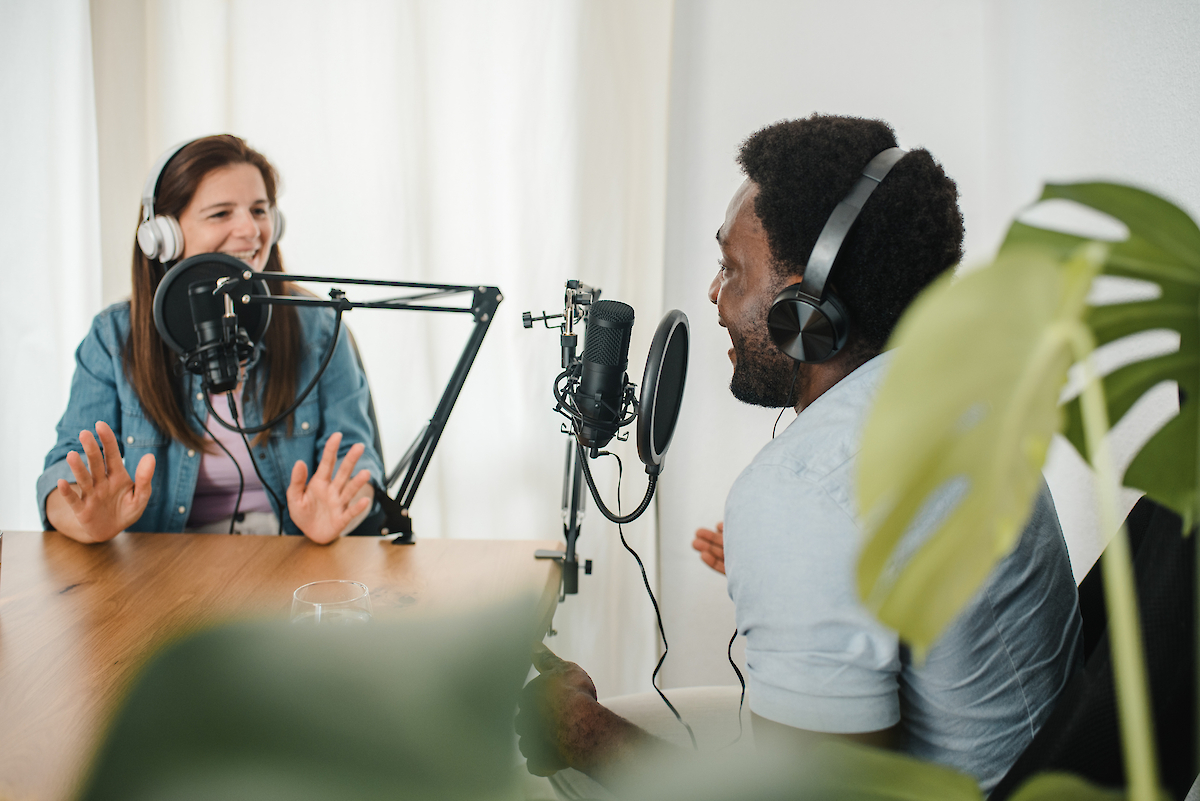Podcast Transcription
news / podcast-transcription | Previous Post Next PostWhat is a Podcast?
A podcast is an audio program similar to talk radio that started in the early 2000s. Podcasts cover a large variety of content. There are podcasts about world news, true crime, comedy, advice, and educational podcasts on almost any topic. Unlike the radio, podcasts come in episodes you can download from the internet and listen to wherever and whenever. Everyone is always on the go in today's world, so listening to a podcast is a great way to engage with the news, a story, or something else that might interest or educate you.

Podcast Statistics
Considering podcasts have been around for nearly two decades, they've grown exponentially in the last five years. In the past year alone, new podcasts grew by 110%. More than 2 million podcasts are available worldwide,with new shows released daily.
Over half of the digital audio listeners tune into podcasts at least once a month. People spend more time listening to podcasts, and listening time is set to increase by 16.1% yearly, with listeners tuning in for 4-7 hours per week. By the end of 2024, nearly 505 million people are projected to be tuning into podcasts worldwide.
Statistically, podcast listeners are between the ages of 18-54, with the most growth from new listeners ages 18 to 34. Even with such impressive growth numbers, many podcasters are trying to figure out how to continue to grow their audience base. One way to do that is to provide a transcription with the podcast.
Why should podcasts include a transcription?

Transcriptions are an excellent tool for content creators and not just to provide accessibility. There are several reasons why you should consider transcribing your podcasts. Take a look at the main reasons we suggest.
Shareability and searchability
Instagram and TikTok make sharing snippets of audio from a podcast easy. What about the social media platforms that aren't as audio-friendly? A transcript can take your social media marketing to the next level. Podcasters and listeners can take the most quotable lines and facts from an episode and quickly share them on Twitter, Facebook, and LinkedIn using the text from a transcript. With nearly 3 billion users on those platforms, there is a high potential for attracting new listeners.
If you choose to upload your podcast to Youtube, as many podcasters are starting to do, you can use a transcript to help generate subtitles for the video. Including a transcript with the release of a podcast gives listeners a reference point to search specific parts of the show. Transcripts' text archive can also help generate new content such as blog posts, promotional materials, or follow-up episodes.
SEO Rating
Search Engine Optimization, or SEO, determines your website's ranking on a search engine like Google or Bing. Google, being the most widely used search engine, has a very particular way of ranking a website based on content. The more quality content you have, the higher your SEO rankings will be; you are more likely to attract new listeners with a higher ranking. Creating text content that fits your niche is one of the best ways to increase your SEO rank. An easy way to generate this content is with transcripts. If you create a transcript with the release of the audio portion of the podcast, you are providing Google with keywords and search terms to link to your content. These keywords make it easier for new and old listeners to find your content.
Internal Review
The editing process for podcasters can be daunting. Raw recordings can take hours, and the final product may only be 30 minutes or an hour long. There are a lot of tips and tricks to help reduce editing time, and one way to do that is to review your raw transcript. The transcript, especially one that is timestamped, lets you see where you might make a chapter or advertising break. It can also be easier to edit the audio content for repetition or unwanted segments. A transcript archive is also helpful to review when podcasters are creating new content.
Accessibility
As mentioned above, accessibility is a primary reason to use transcripts. Transcripts are helpful for those who have hearing disabilities, people who do not want to listen to the whole audio file, and those with attention-related cognitive conditions. Reading along with the audio can also help learn new languages and aid in comprehending the content.
The World Health Organization reports that hearing disabilities currently affect around 5.5% of the global population, roughly 600 million people. Providing transcripts allows the deaf and hard of hearing to access and engage in your content.
How Link Electronics can help
Manually typing out a transcript can be a daunting task. Even a 30-minute episode might take up to two or three hours to correctly transcribe. That's where Link Electronics can help. Link has spent decades developing products that help provide accessibility for the deaf and hard of hearing. With the ACE Series,an automatic captioning engine, audio from any source can be turned into text for captions, subtitles, or transcripts. What this means for podcasters is that with the ACE series, your podcast audio can be turned into an editable transcription in just a few minutes. Our product includes a built-in editor with time-stamping, allowing you to create 100 percent accurate transcripts in minutes. It can also provide metadata information, speaker identification, multi language translation, and more.
Visit our website and give us a call today to see how our products can help you grow your audience!